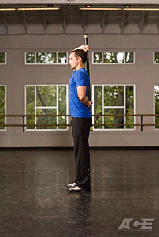In past articles, we have discussed the prevalence of back pain, various treatment options, and the importance of strengthening and stabilizing the spine in order to avoid and prevent injury. Today, I want to let you all in on a very important piece of information that will have a huge impact on the prevention of low back injuries.
Before I let the cat out of the bag, we need to understand a little anatomy first and clarify a few misconceptions. Our spine has a natural “S” shape made up of three curves; a cervical lordosis, thoracic kyphosis and lumbar lordosis. Our spine is constructed this way for a reason; strength and functionality and we classify this spinal position as “neutral”.
This is the strongest position of the spine and when we deviate from this position by flexing forward or extending backward, we place our spine in a compromised position, increasing the probability of injury. Having said that, regardless if we are at the gym lifting heavy weights, bending over to put on a pair of shoes or simply getting out of a chair, we need to try and maintain this neutral spinal posture. In order to do so, we teach our patients to bend and hinge through their hips to prevent the back from having to bend and lose its neutral position. One misconception that many trainers at gyms still preach is to flatten the back when lifting…WRONG! Flattening the back causes the spine to flex which compromises that neutral position and will increase the likelihood of injury.
Regardless of the activity, we need to learn how to hinge using our hips and keep our spine in a neutral position. Below you will see several examples of what a neutral spine should look like during various activities.
Below is a good exercise, I often use to help people get a feel as to how to maintain a neutral spine while hinging through the hips. Use a hockey stick or broom stick and place it along your spine so that the back of you head, mid back and tailbone all make contact with the stick. You are going to attempt to bend forward, hinging through your hips while maintaining the stick against all 3 contact points mentioned above. Repeat this activity for 3 sets of 12-15 repetitions.





About The Author: Activehealthinstitute_8uxcp6
More posts by activehealthinstitute_8uxcp6